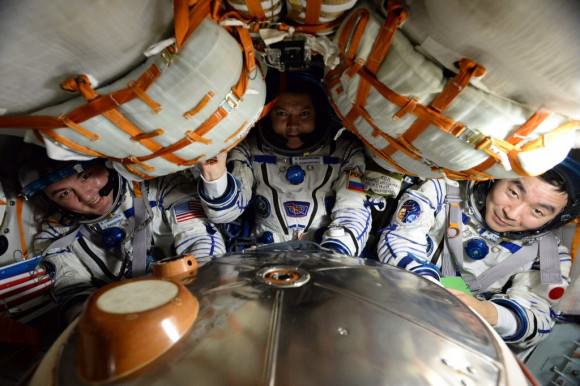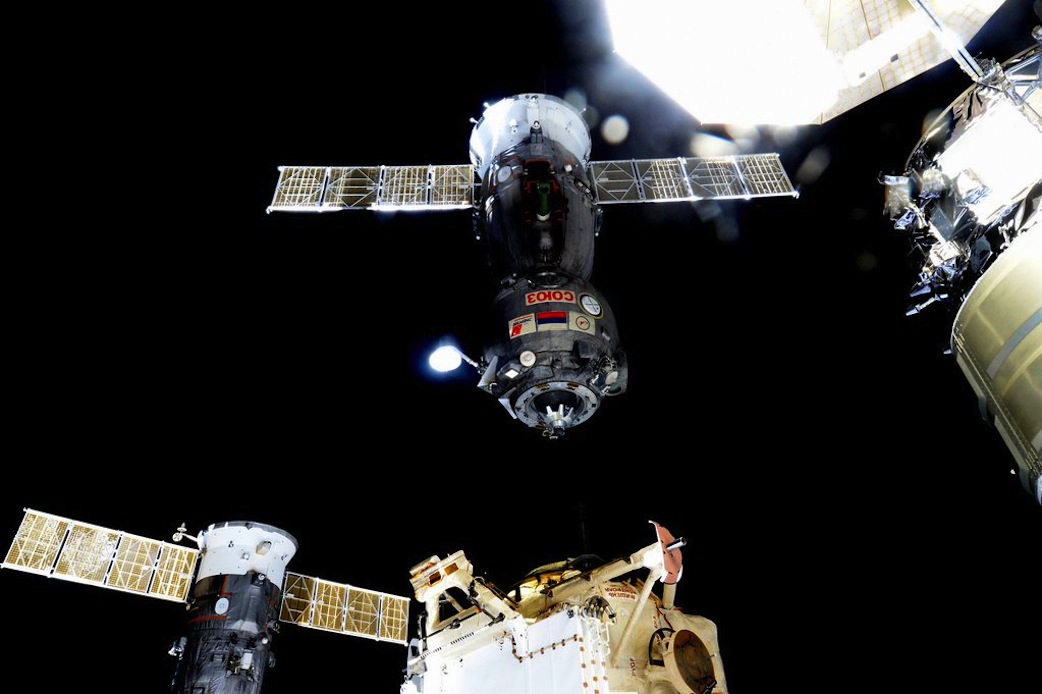American astronaut Scott Kelly and Russian cosmonaut Mikhail Kornienko will return to Earth tonight after 340 days aboard the International Space Station. The year in space may have been fairly routine in some aspects (other than goofing around in a gorilla suit,) but the return to Earth aboard the Soyuz capsule will be anything but.
After un-docking from the ISS at 8:02 pm EST, the Soyuz—piloted by commander Sergey Volkov—will move about 12 miles away. Then the Soyuz’s braking rockets will be fired for 4 minutes and 49 seconds, slowing the craft by 460 kmh (286 mph.) Then begins the harrowing part.

Soyuz will free-fall for 25 minutes, until it hits the Earth’s atmosphere at 100 km (62 miles) above the surface. Then the craft has to withstand a five-minute stretch of extreme heating as it descends to 20 miles above the Earth’s surface. At an altitude of 10.6 km (6.6 miles), a large parachute—called a drogue chute—will deploy from Soyuz’s descent module, helping to slow the craft’s descent. Lastly, rockets will fire, which will lead to a jarring and nerve-wracking touchdown in Kazakhstan. According to Kelly, who has two space shuttle flights to his credit, the whole experience defies description.

But it’s what happens when Kelly is back on Earth that is the most important part of this record-breaking 340 day mission aboard the ISS. It’s no coincidence that the mission was exactly 340 days long. That’s how long a manned mission to Mars is expected to take, and Kelly’s and Kornienko’s mission was designed to mimic that. NASA hopes to gain an understanding of the effects a Mars mission will have on the astronauts who make that trip.
What’s unique about Kelly is that he has a twin brother Mark—also an astronaut and former shuttle commander—who is being monitored and subjected to the same tests as Scott during his year in space. By comparing the twin brothers before, during, and after Scott’s year aboard the ISS, NASA expects to learn a lot about extended periods of weightlessness and long-term exposure to radiation, and how astronauts will be affected. And that will all happen as soon as Kelly and Kornienko return.
Any crew member returning from space faces a battery of tests to determine their condition. But Kelly and Kornienko will face all that and then some. It’s essential that the two are assessed as soon as they return, because their bodies will begin to acclimatize to Earth’s gravity as soon as they land. After exiting Soyuz, they will be transported directly to medical tents, where they will sit in recliners. They will have a short time to get their bearings, then testing will begin. For Kelly, the testing will continue on his flight back to the USA. The more detail they can gather on Kelly’s condition and physiology, the better it will be for any astronauts making the trip to Mars in the future.
This is important, ground-breaking stuff. And with missions like this, NASA and other organizations are learning a lot and are continuing to expand humanity’s horizons. But, as we keep seeing, there is always a lighter side to these endeavours: For fun, check out NASA’s Crazy Facts About The Year In Space.


Thelarge parachute that deploys is NOT a drouge. The drouge is the little parachute which pulls out and helps deploy the large parachute. The drouge helps stabilise the descent a little, but it job is getting the large parachute deployd.
Yes, Evan Gough has a poor track record for accuracy.